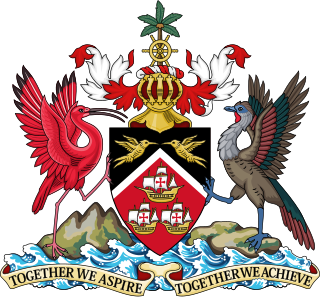
General elections were held in the Netherlands on 3 July 1918. They were the first elections held after a series of reforms that introduced universal male suffrage and pure proportional representation, replacing the previous two-round system in single member constituencies. This change was known as the Pacification of 1917, which also included the introduction of state financing of religious schools, and led to the start of consociational democracy.
The Liberal Party of Cuba, was one of the major political parties in Cuba from 1910 until the Cuban Revolution in the late 1950s, when it was exiled.

General elections were held in the Netherlands on 13 June 1956. For the first time, the Labour Party (PvdA) emerged as the largest party, winning 50 of the 150 seats in the House of Representatives.

Elections in Antigua and Barbuda take place in the framework of a parliamentary democracy.

The National Alliance for Reconstruction (NAR) was the governing party in Trinidad and Tobago between 1986 and 1991. The party has been inactive since 2005.

Parliamentary elections were held in Russia on 12 December 1993. They were the first parliamentary elections in post-Soviet Russia and the only time to the Federation Council, with future members appointed by provincial legislatures and governors.
Early parliamentary elections were held in Iceland on 25 and 26 October 1959. Following the electoral reforms made after the June elections, the Independence Party won 16 of the 40 seats in the Lower House of the Althing.
Parliamentary elections were held in Iceland on 25 April 1987. The Independence Party remained the largest party in the Lower House of the Althing, winning 12 of the 42 seats.

Federal elections were held in Czechoslovakia on 8 and 9 June 1990, alongside elections for the Czech and Slovak Assemblies. They were the first elections held in the country since the Velvet Revolution seven months earlier. Voter turnout was 96.2%.

Elections for the Constituent Assembly were held in Denmark on 5 October 1848. Of the 158 seats in the Assembly, 114 were elected and 44 appointed by the King. An additional 31 candidates were to come from the Duchy of Schleswig but were not elected due to the First Schleswig War.
Parliamentary elections were held in Iceland on 21 October 1916. Voters elected all 26 seats in the Lower House of the Althing and eight of the fourteen seats in Upper House, the other six having been elected in August. The Home Rule Party emerged as the largest party in the Lower House of the Althing, winning eight of the 26 seats.
Elections to the Upper House of the Althing were held in Iceland on 1 July 1926. Six seats were elected by proportional representation at the national level, using the D'Hondt method. The remaining eight seats were elected along with the Lower House.
Elections to the Upper House of the Althing were held in Iceland on 15 June 1930. Following reforms in 1915, the six seats in the Upper House appointed by the monarch were abolished, and replaced with six elected seats. The seats were elected by proportional representation at the national level, using the D'Hondt method. The remaining eight seats were elected along with the Lower House. This was the last election solely for the Upper House, as from 1934 onwards all Upper House members were elected together with the Lower House.
Parliamentary elections were held in Iceland on 27 October 1923. Voters elected all 28 seats in the Lower House of the Althing and eight of the fourteen seats in Upper House. The Citizens' Party, a loose collection of conservatives, emerged as the largest party in the Lower House, winning 16 of the 28 seats.
Parliamentary elections were held in Iceland on 12 June 1931. Voters elected all 28 seats in the Lower House of the Althing and eight of the fourteen seats in Upper House. The Progressive Party emerged as the largest party in the Lower House.
Parliamentary elections were held in Iceland on 16 July 1933. Voters elected all 28 seats in the Lower House of the Althing and eight of the fourteen seats in Upper House. The Independence Party emerged as the largest party in the Lower House, winning 13 of the 28 seats.
Parliamentary elections were held in Iceland on 24 June 1934. They were the first held after reforms to the electoral system that increased the number of seats in the Lower House from 28 to 33 and ensured that all members of the Althing were elected at the same election. The Independence Party emerged as the largest party in the Lower House, winning 14 of the 33 seats.
Early parliamentary elections were held in Iceland on 18 and 19 October 1942. They were held after reforms were made to the electoral system following the July elections. The Independence Party emerged as the largest party in the Lower House of the Althing, winning 13 of the 35 seats.

General elections were held in Portugal on 28 April 1918, following a coup by Sidónio Pais in December 1917. The elections were boycotted by the Democratic Party, the Evolutionist Party and the Republican Union, who had won over 90% of the seats in the 1915 elections.

Parliamentary elections were held in Portugal on 11 May 1919. The three main parties that boycotted the 1918 elections returned to contest the elections. The result was a victory for the Democratic Party, which won 86 of the 163 seats in the House of Representatives and 36 of the 71 seats in the Senate.









